Picture this: a little patch of earth, teeming with life and promise, where you can pluck ripe, sun-warmed tomatoes and crisp lettuces right from the ground. Whether you’re a gardening novice eager to get your hands dirty or a seasoned green thumb seeking to expand your horticultural horizons, starting a vegetable patch can transform your backyard into a bountiful oasis.
Growing your own vegetables is more than just a rewarding hobby; it’s a step toward sustainability, self-sufficiency, and a deeper connection with nature. In this article, you’ll discover everything you need to cultivate your own thriving vegetable garden, from choosing the right location to selecting the perfect plants for your climate.
You’ll also learn practical tips for soil preparation, planting techniques, and ongoing care to ensure your garden flourishes throughout the season. With a bit of guidance and a sprinkle of patience, you’ll soon be harvesting fresh produce that’s as satisfying to eat as it is to grow.
Select an Ideal Location
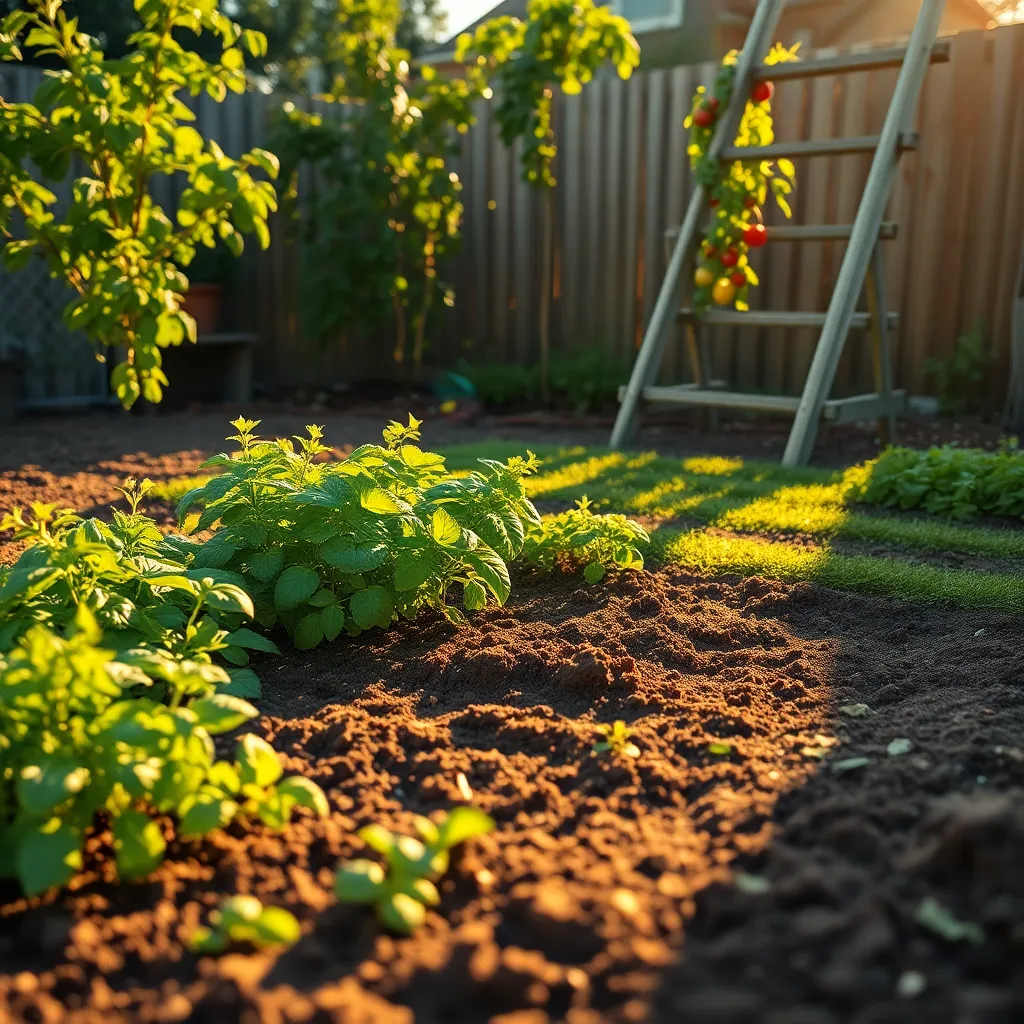
Choosing the right location for your vegetable patch is crucial for success. Start by identifying an area that receives at least six to eight hours of direct sunlight daily, as most vegetables thrive in sunny conditions.
If your garden is shaded for part of the day, select crops like lettuce and spinach that tolerate partial shade. Ensure the chosen spot has well-draining soil to prevent waterlogging, which can harm plant roots.
Consider proximity to a water source to make watering more convenient, especially during dry spells. You might want to place the patch near a rainwater barrel or an outdoor faucet for easy access.
For advanced gardeners, testing the soil for pH and nutrient levels can provide valuable insights into its suitability. Aim for a pH of 6.0 to 7.0, which is ideal for most vegetables, and amend the soil as needed with compost or organic matter.
- Tip for Beginners: Use a simple test kit available at garden centers to check soil pH.
- Advanced Tip: Rotate crops yearly to maintain soil health and reduce pest buildup.
Test and Amend the Soil
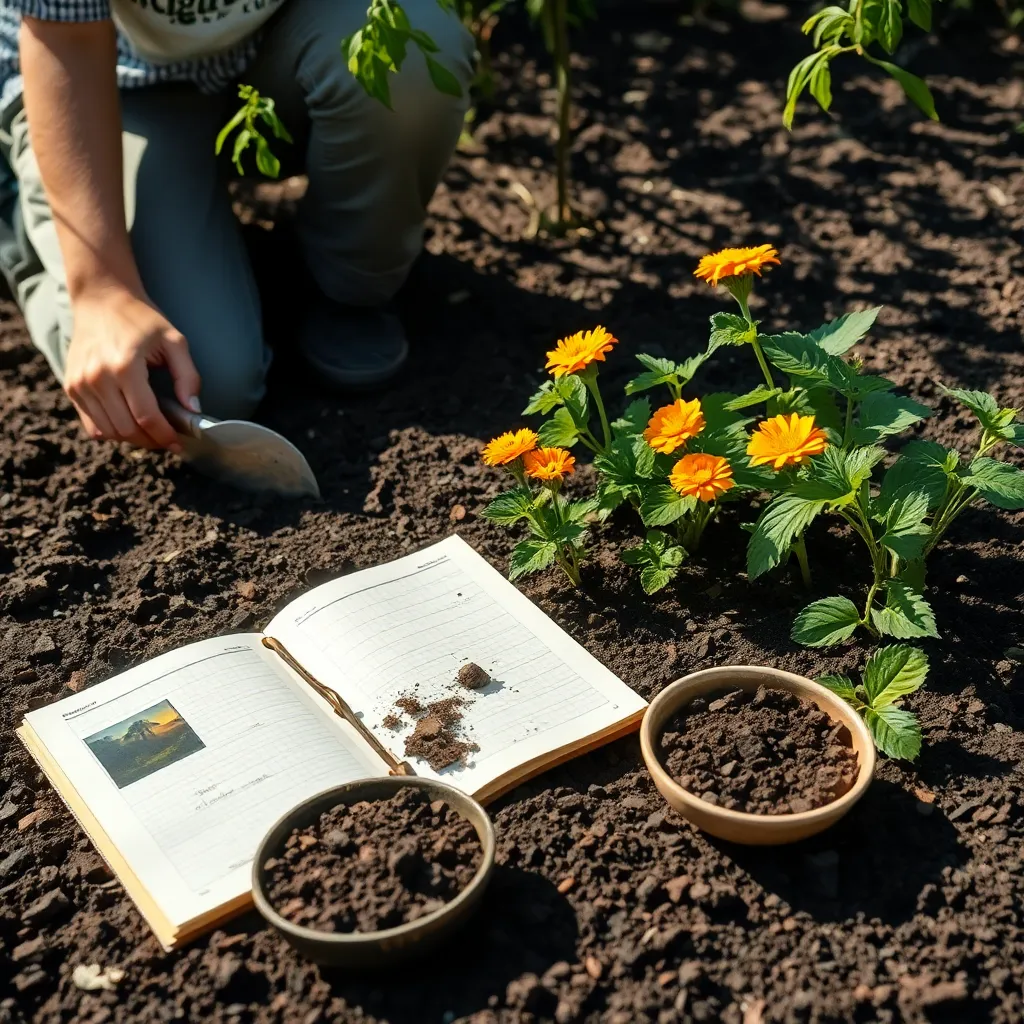
Before starting your vegetable patch, it’s crucial to test your soil to understand its current condition. You can purchase a simple soil test kit from your local garden center, which will provide insights into the pH level and nutrient content.
Understanding your soil’s pH is essential, as most vegetables prefer a slightly acidic to neutral pH range of 6.0 to 7.0. If your test reveals an imbalance, you can amend your soil accordingly to create the optimal growing environment.
To adjust soil pH, consider using lime to raise it or sulfur to lower it, following the instructions on the product packaging for precise application. Adding organic matter such as compost or well-rotted manure can also improve soil structure and fertility, benefiting both beginner and experienced gardeners alike.
In addition to pH, check for nutrient deficiencies, as vegetables require a balanced supply of nutrients to thrive. If the soil lacks nitrogen, phosphorus, or potassium, incorporate a balanced vegetable garden fertilizer, applying it according to the manufacturer’s guidelines.
For advanced gardeners, consider implementing a crop rotation plan to naturally improve soil health and prevent pest buildup. Rotating crops helps maintain nutrient levels and reduces the risk of plant diseases, ensuring a more productive garden year after year.
Plan Your Vegetable Layout
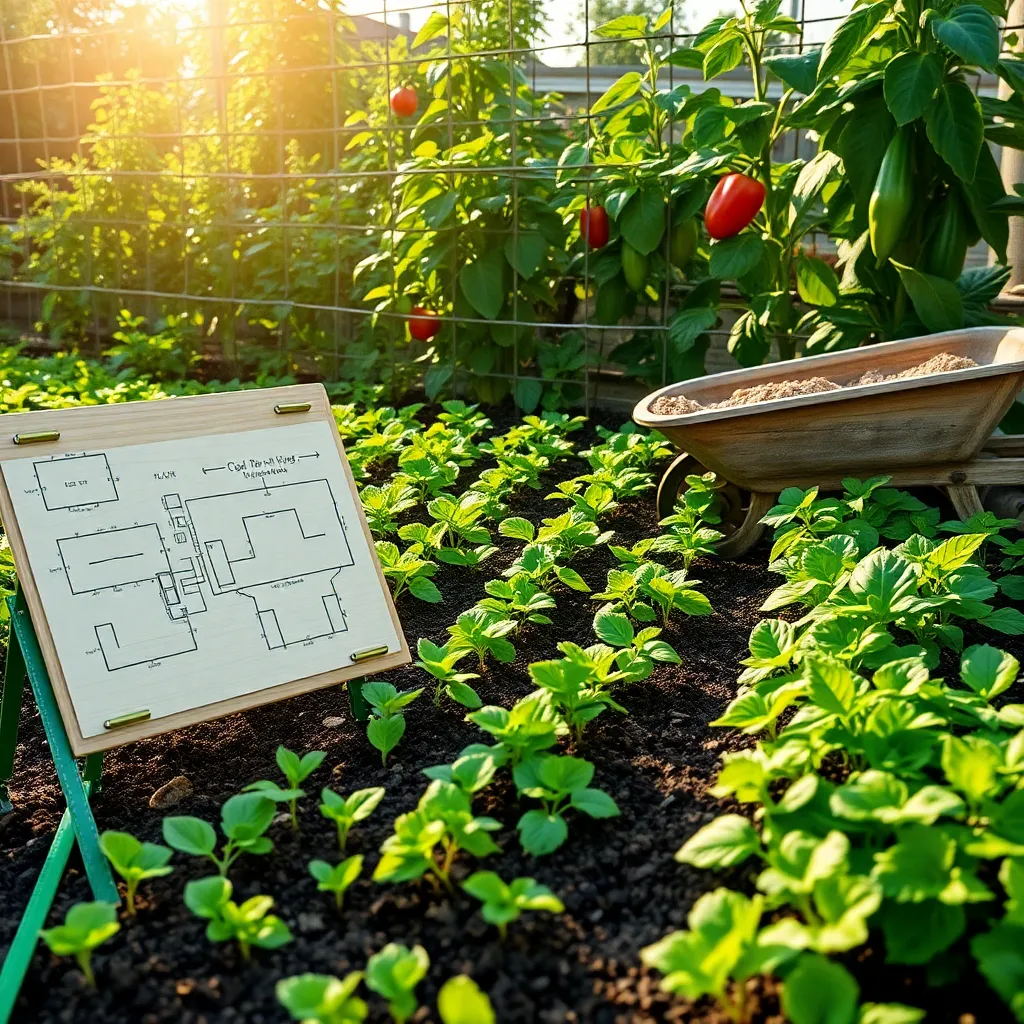
Once you’ve prepared your soil, it’s time to plan the layout of your vegetable patch. Start by considering the specific needs of each vegetable, such as sunlight requirements and space.
Consider grouping plants with similar needs together to simplify care. For instance, root vegetables like carrots and beets thrive in loose, well-draining soil, while leafy greens prefer more moisture.
Make sure to arrange taller plants, like tomatoes and corn, on the north or east side of your patch. This positioning prevents them from casting shade on shorter plants that need full sun.
Rotating crops each year is crucial to maintaining soil health and preventing pest buildup. Plan your layout with crop rotation in mind, ensuring that related plants do not occupy the same space in consecutive seasons.
Sow Seeds or Transplants
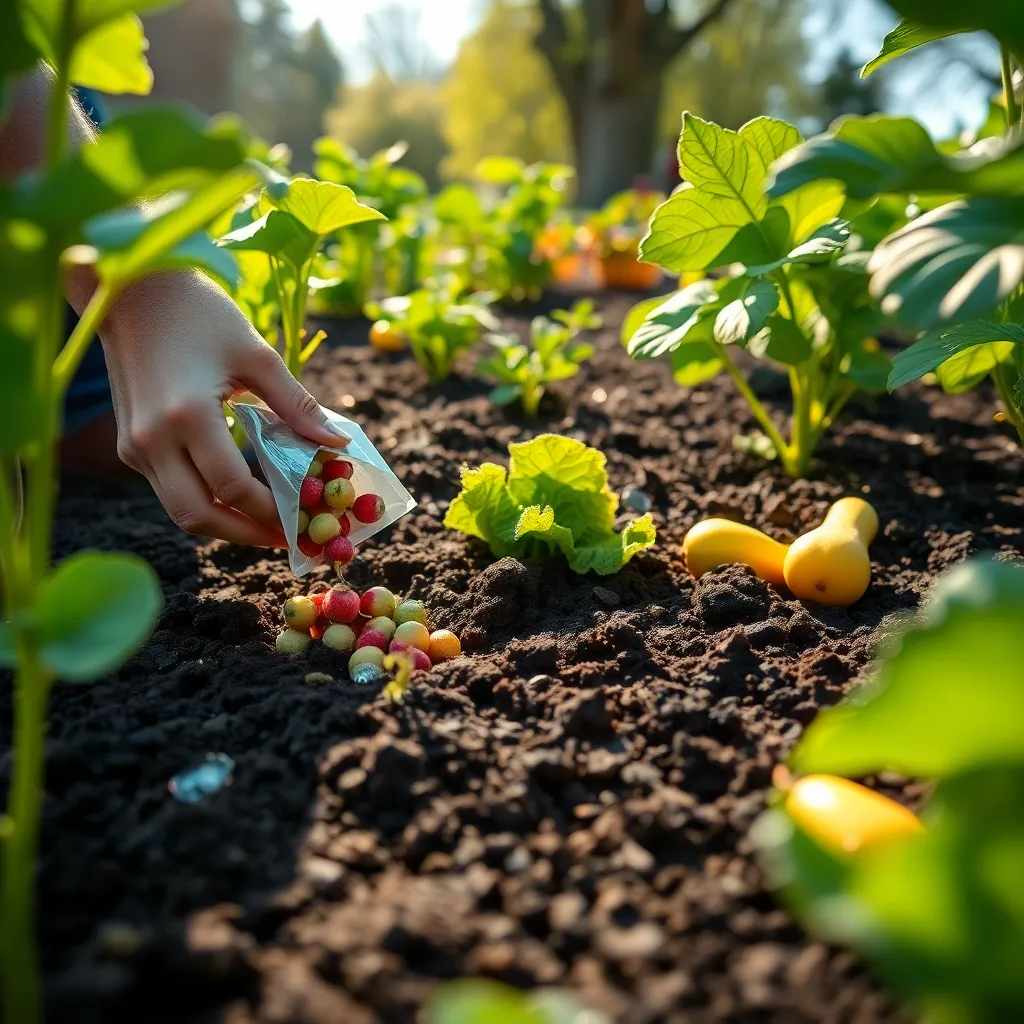
When starting a vegetable patch, deciding whether to sow seeds or use transplants is crucial. Sowing seeds is often more economical and allows you to grow a wider variety of plants.
Direct sowing is ideal for vegetables like carrots, radishes, and peas that have fragile roots. To ensure success, sow seeds in well-draining soil and keep the area consistently moist until germination.
Transplants, on the other hand, give you a head start on the growing season, especially for slow-growing plants like tomatoes and peppers. For the best results, choose healthy transplants with strong stems and dark green leaves.
Timing is key when using transplants; plant them after the last frost date in your area. Prepare your soil by adding compost to enhance nutrient content, which will support robust growth.
- Tip for beginners: Start with sturdy, easy-to-grow transplants like lettuce or kale to build confidence.
- Advanced gardeners: Experiment with heirloom seeds for unique flavors and colors in your vegetable patch.
Implement a Consistent Watering Schedule
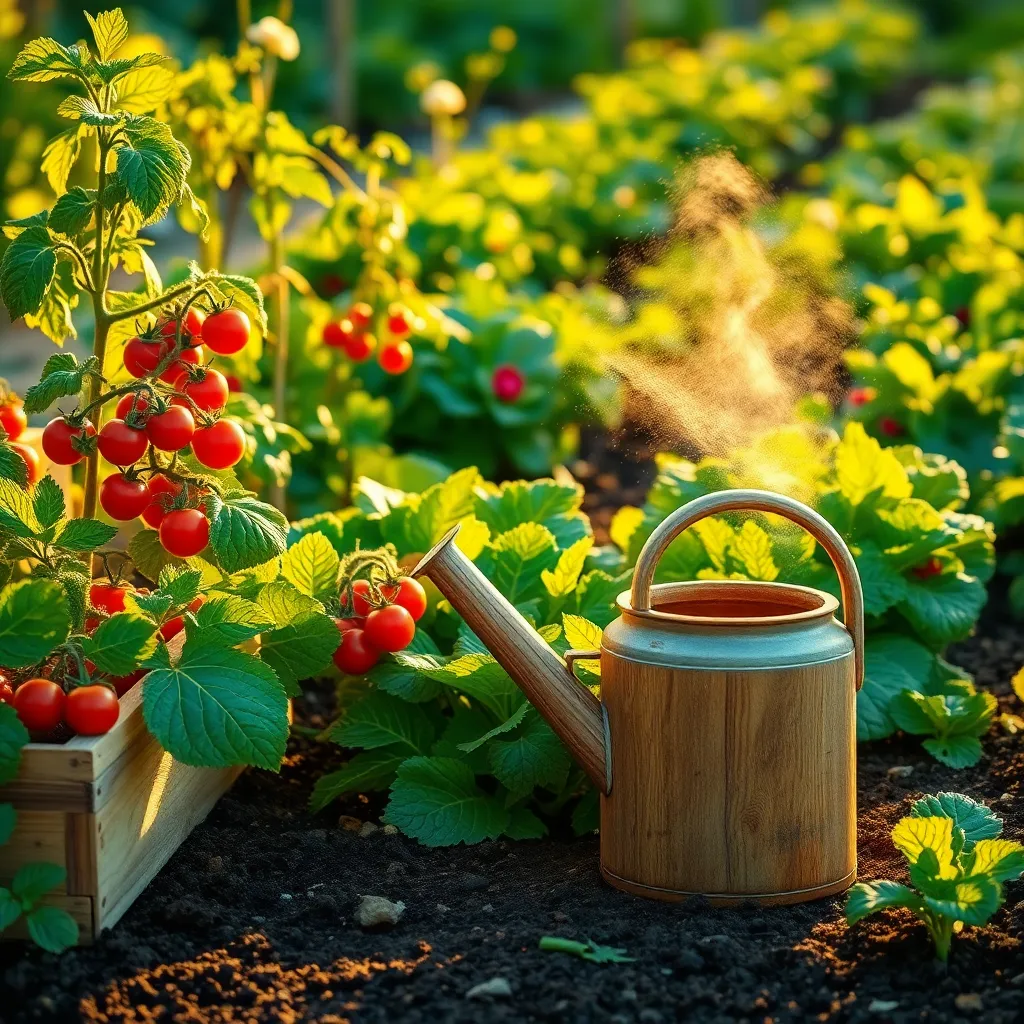
Once your seeds or transplants are in the ground, establishing a consistent watering schedule is crucial. Consistency helps plants develop strong roots, which are essential for absorbing nutrients and water efficiently.
Begin by understanding the specific watering needs of your chosen vegetables. For instance, leafy greens like lettuce often require more frequent watering than root vegetables like carrots, which can suffer from overwatering.
Generally, vegetable patches benefit from about 1 inch of water per week, including rainfall. To measure this, place a rain gauge or a small container in your garden to monitor how much water your plants are receiving.
Water your garden early in the morning or late in the afternoon to minimize evaporation and allow plants to absorb moisture effectively. Deep watering encourages roots to grow deeper, making your plants more drought-resistant in the long run.
For those with busy schedules, consider installing a drip irrigation system or soaker hoses. These methods deliver water directly to the soil, reducing waste and preventing the foliage from becoming wet, which can lead to disease.
Monitor the moisture level of your soil regularly by inserting your finger about an inch deep. If it feels dry, it’s time to water; if it’s still moist, wait another day or two.
Conclusion: Growing Success with These Plants
Embarking on the journey of nurturing a vegetable patch is not unlike cultivating a thriving relationship. In this article, we explored five key concepts: understanding the importance of a strong foundation, the necessity of consistent nurturing, handling challenges with resilience, the value of patience and growth, and celebrating the fruits of your labor together. Just as a garden flourishes with care and attention, so too does a relationship thrive with dedication and love.
As your actionable next step, take a moment today to identify one area in your relationship that could benefit from more nurturing, whether it’s communication, quality time, or shared goals. Start small, with one intentional act of kindness or a heartfelt conversation.
Remember, great relationships, like lush gardens, are built over time. Bookmark this article now to revisit these insights as you continue to grow both your garden and your connection with your partner. By doing so, you ensure a handy guide whenever you need a boost of inspiration or guidance.
Looking ahead, your commitment to cultivating these principles promises not just a successful vegetable patch, but a deeply rewarding relationship that flourishes season after season. Embrace the journey with confidence and watch your love story grow.
